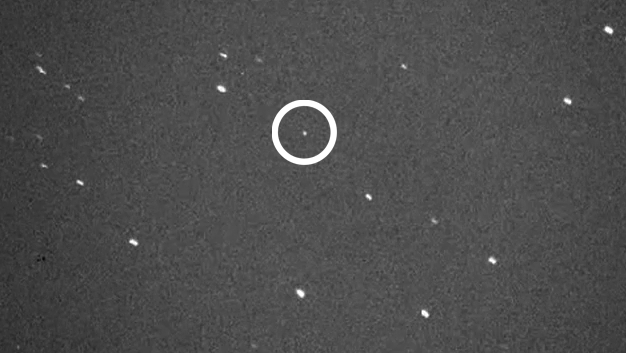House-Size Asteroid Gives Earth a Close Shave Today

An asteroid the size of a house will buzz Earth today (Oct. 12) but poses no risk of hitting our planet, scientists say.
The asteroid 2012 TC4 will pass Earth at a range of just 59,000 miles (95,000 kilometers) —about one-fourth the distance to the moon — when it makes its closest point today, NASA scientists said. The asteroid was discovered by astronomers on Oct. 4 and is about 56 feet (17 meters) across.
"Small asteroid 2012 TC4 will safely pass Earth Oct 12 at just .25 the distance to our moon's orbit," scientists with NASA's Asteroid Watch program wrote in a Twitter update this week. On average, the moon's orbit is about 238,000 miles (383,000 km).
The asteroid is large enough to be seen by backyard astronomers using a small telescope, the night sky events website Spaceweather.com has reported.
Near-Earth flybys of small asteroids like 2012 TC4 pass inside the orbit of the moon fairly often, Asteroid Watch scientists at NASA's Jet Propulsion Laboratory in Pasadena, Calif., explained. On Sunday (Oct. 7), the 100-foot-wide (32-meter) asteroid 2012 TV also passed inside the moon's orbit, missing Earth by about 158,000 miles (255,000 kilometers).
NASA scientists and astronomers regularly watch the skies for potentially dangerous asteroids that could pose and impact threat to Earth. In fact, by a fluke of timing, a group of asteroid hunters announced Thursday (Oct. 11) that it is on track for a 2017 launch of a private space telescope dedicated to seeking out potentially dangerous space rocks.
Officials with the B16 Foundation said their plan to launch the Sentinel Space Telescope to scan for near-Earth asteroids has passed a major review milestone. The new space telescope is designed to search for asteroids from an observation spot near the orbit of Venus.
Sign up for the Live Science daily newsletter now
Get the world’s most fascinating discoveries delivered straight to your inbox.
In September 2011, NASA announced that its surveys had found about 90 percent of the largest asteroids that could post a threat – space rocks the size of a mountain or bigger.
Asteroid 2012 TC4 is too small to pose a risk to Earth. Past estimates by astronomers said that an asteroid about 460 feet wide (140 meters) would cause widespread damage on the planet.
If you snap a photo of asteroid 2012 TC4 in the night sky using a telescope and would like to share it with SPACE.com, send images, comments and location info to managing editor Tariq Malik at: tmalik@space.com.
This story was provided by SPACE.com, a sister site to LiveScience. You can follow SPACE.com Managing Editor Tariq Malik on Twitter @tariqjmalik and SPACE.com on Twitter @Spacedotcom. We're also on Facebook & Google+.

Tariq is the editor-in-chief of Live Science's sister site Space.com. He joined the team in 2001 as a staff writer, and later editor, focusing on human spaceflight, exploration and space science. Before joining Space.com, Tariq was a staff reporter for The Los Angeles Times, covering education and city beats in La Habra, Fullerton and Huntington Beach. He is also an Eagle Scout (yes, he has the Space Exploration merit badge) and went to Space Camp four times. He has journalism degrees from the University of Southern California and New York University.











